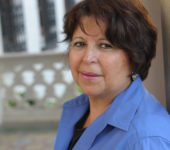• by Adela Solís, Ph.D., and Kristen Grayson, Ph.D. • IDRA Newsletter • September 2014 • 

With the new school year begun, Suzanne Irujo, now a seasoned teacher, reflects on her first year as a third and fourth grade bilingual teacher: “I worried about how I would learn to teach reading and math, but I didn’t worry about when to use English or Spanish in my classroom. Nobody else did, either. They just said, ‘Here’s your classroom, these are your students, go teach.’” (2004)
In schools that work for English language learners, where transitional bilingual education or dual language maintenance programs are in operation, the students’ primary language is central to the goal of teaching English and to meeting the primary language goal specific to the program. If these goals are to be met, teachers need to pay attention to how much time they devote to each language. Research has shown that when bilingual teachers don’t consciously monitor their language use, they tend to use much more English than they intend or thought they were using (Bruce, et al., 2000; IteachIlearn, 2004).
This results in the native language not being developed sufficiently to provide a solid base for transfer to English. It additionally undermines the core rationale of bilingual education: to strengthen and provide instruction in the stronger language as students are learning English. In this situation, subject matter knowledge will not progress since the students probably do not understand as much from English instruction as they would from primary language instruction. This situation has a negative effect on the learning of English and impacts the students’ education in general (NABE, 2014).
Freeman & Freeman state, “For optimal use of the two languages in a bilingual program, a structure should be developed that allows for use of both languages in literacy and other academic contexts” (2006). How much each language is used and the ways in which it is used must be the result of deliberate planning and thoughtful delivery. Bilingual teachers should then seek the appropriate guidance to structure state-of-the-art instruction in both languages. Teachers should always remember when planning their teaching in bilingual classrooms that dual language means two languages.
Clearly there is more information available for teaching in English than for teaching in Spanish in bilingual and dual language programs. Nevertheless, there are available resources to guide the balanced planning and delivery of excellent Spanish instruction. (See the listing in the boxes on Pages 3 and 4 and see IDRA’s website for active links.) Meeting the challenge of addressing the primary language part of dual language instruction means seeking out the standards, curriculum, and ideas on teaching methods (Solís, 2012).
Resources
Bruce, K.L., & R. Lara-Alecio, R.I. Parker, J.E. Hasbrouck, L. Weaver, B, Irby. “Inside Transitional Bilingual Classrooms: Accurately Describing the Language Learning Process,” Bilingual Research Journal (2000). 21, No. 2/3.
Freeman, I.S., & D.E. Freeman. Teaching Reading and Writing in Spanish and English in Bilingual and Dual Language Classrooms, second edition (Portsmouth, N.H.: Heinemann, 2006).
Irujo, S. “One Classroom, Two Languages: Which Language When?” ELL Outlook (Amesbury, Mass.: 2011-2012 Course Crafters Guide to the ELL Market, 2004) pg. 229-232.
ITeachILearn.org. Case Studies: Small Rural Bilingual Program, web page (ITeachILearn.org, 2004).
NABE. What is Bilingual Education, web page (Silver Spring, Md.: National Association for Bilingual Education, Website Resource Center, 2014).
Solís, A. Teaching Spanish in Texas Schools: The Spanish Language Arts and Reading (SLAR), Texas Essential Knowledge and Skills (TEKS) and Other Resources for Teachers of Spanish (San Antonio, Texas: Intercultural Development Research Association, 2012).
Semillitas de Aprendizaje™ is a bilingual (Spanish/English) supplemental early childhood curriculum by IDRA that is based on the art of storytelling.
Spanish Teaching Standards and Assessments
National Spanish Examination Standards
Standards for the teaching of foreign languages (in the United States)
Spanish Language Arts and Reading Standards (Texas)
Spanish Language Arts Standards (Illinois)
Teaching Pedagogy for Bi-literacy Development
“Teaching Literacy in Spanish,” by K. Escamilla in The Power of Two Languages 2000
Teaching Reading to ELL: Differentiating Literacies, by S.G. Herrera, D.R. Perez, & K. Escamilla (Pearson 2009)
The Differences between English and Spanish
Spanish Books
Reforma Resources for Libraries
Biblioteca Virtual del Español (con una sección para literatura infantil)
Other Teaching Ideas on the Web
Bilingual Teachers Clubhouse Blog
Idea board and pins from Pinterest
Lesson plans that coincide with foreign language teaching standards in ACTFL
Colorín Colorado: A bilingual website for families and teachers of English language learners
Adela Solís, Ph.D., is a senior educate associate in IDRA Field Services. Kristen Grayson, Ph.D., is an associate in IDRA Field Services. Comments and questions may be directed to them via email at feedback@idra.org.
[©2014, IDRA. This article originally appeared in the September 2014 IDRA Newsletter by the Intercultural Development Research Association. Permission to reproduce this article is granted provided the article is reprinted in its entirety and proper credit is given to IDRA and the author.]



